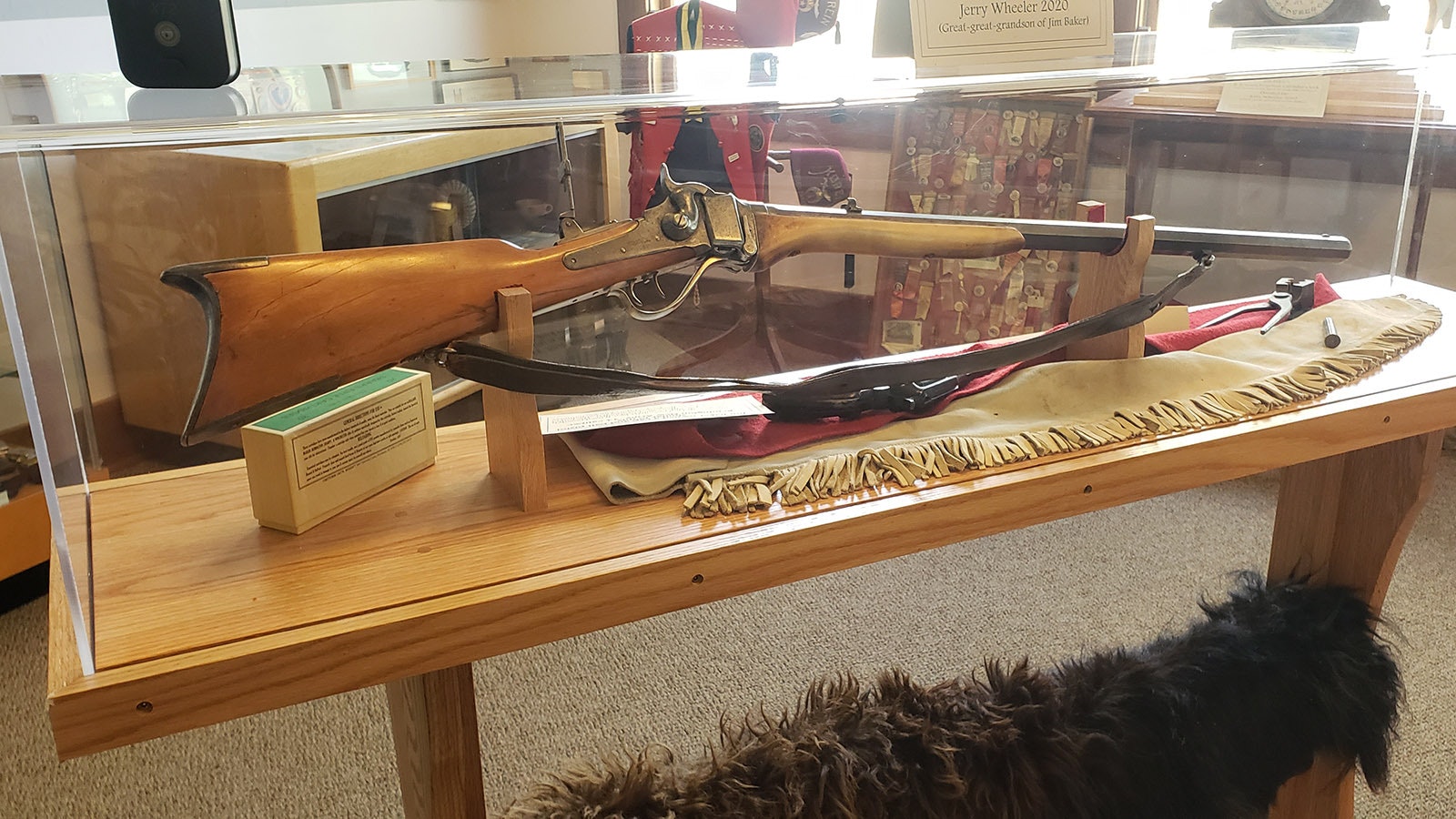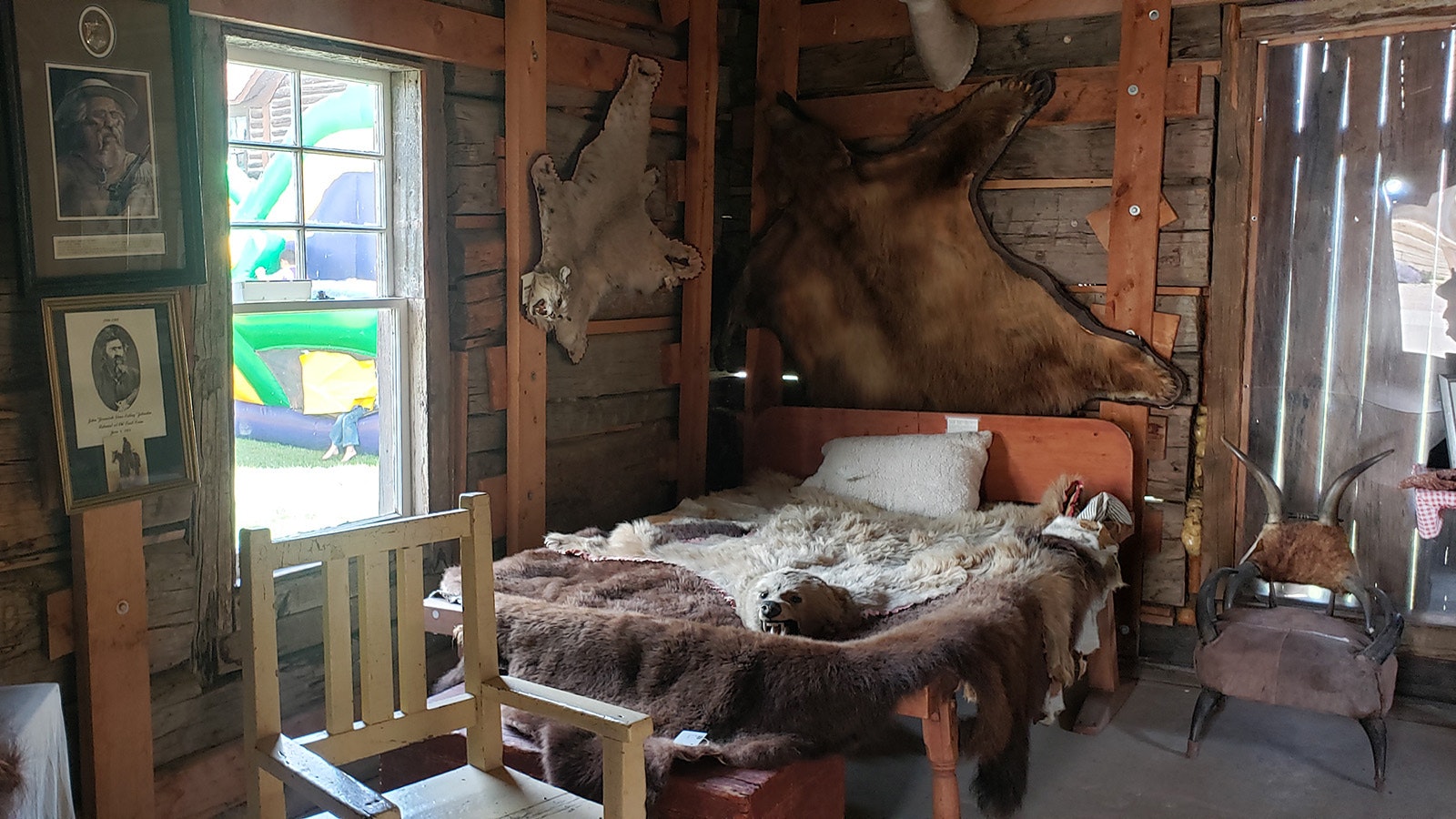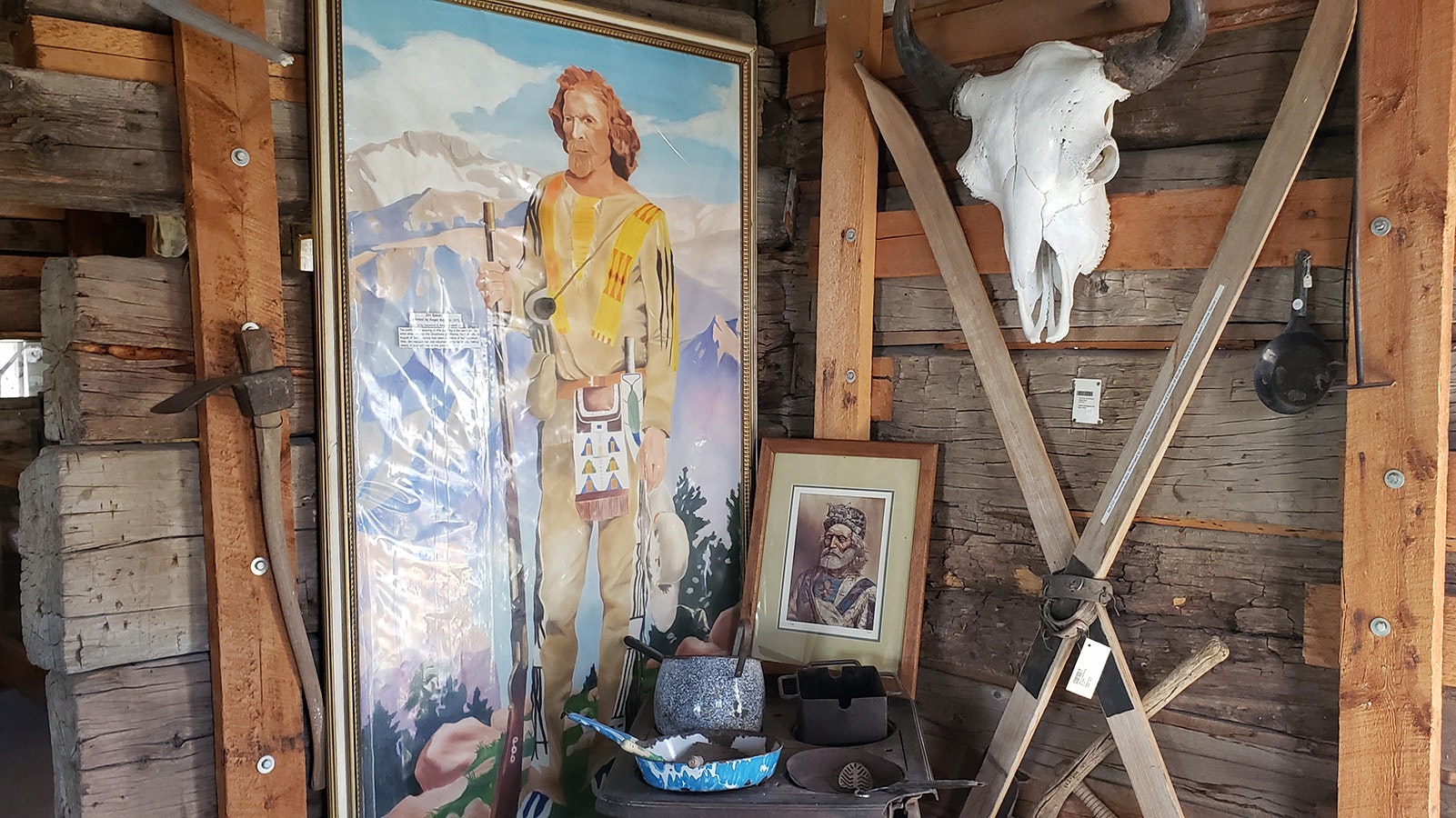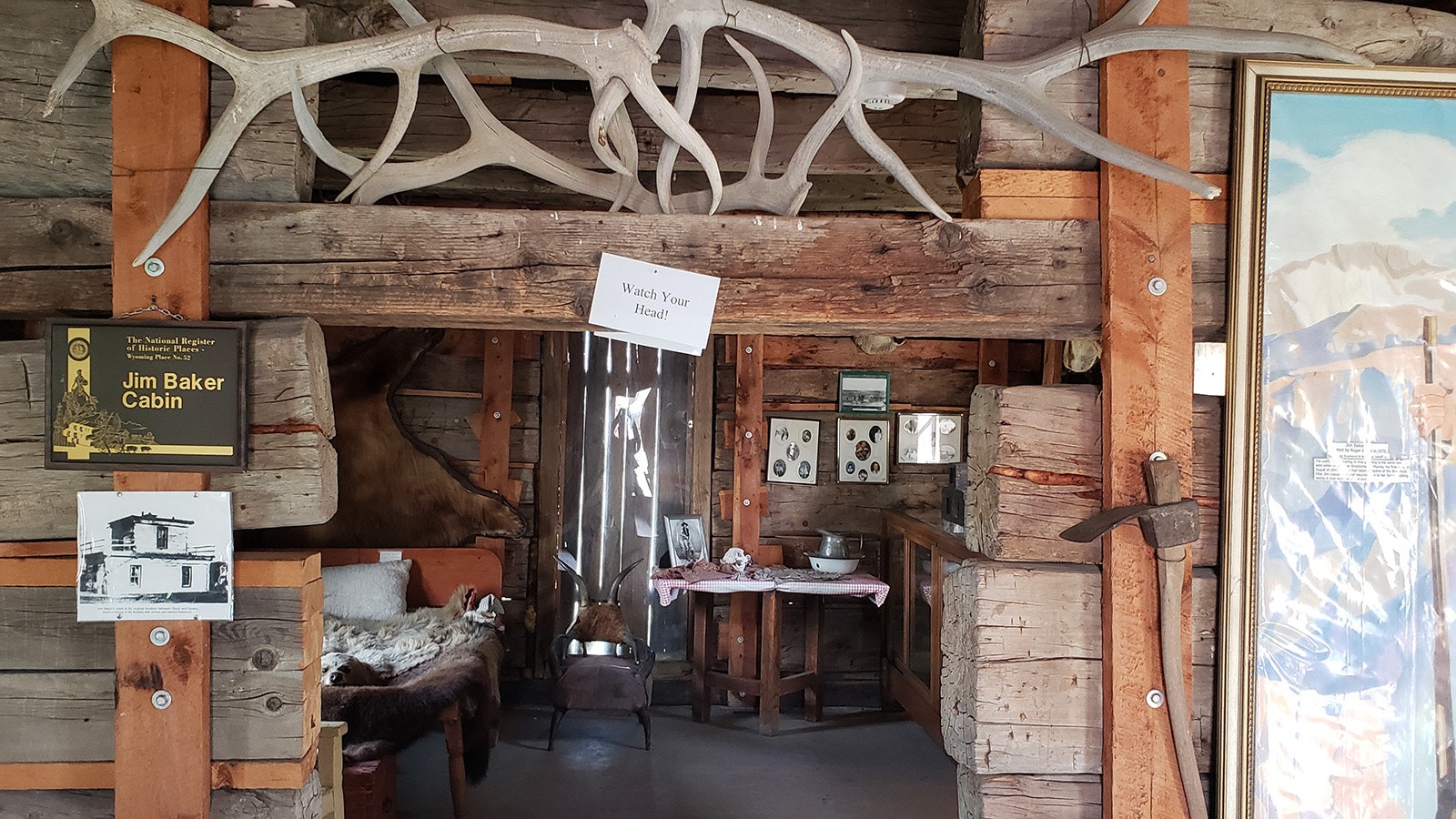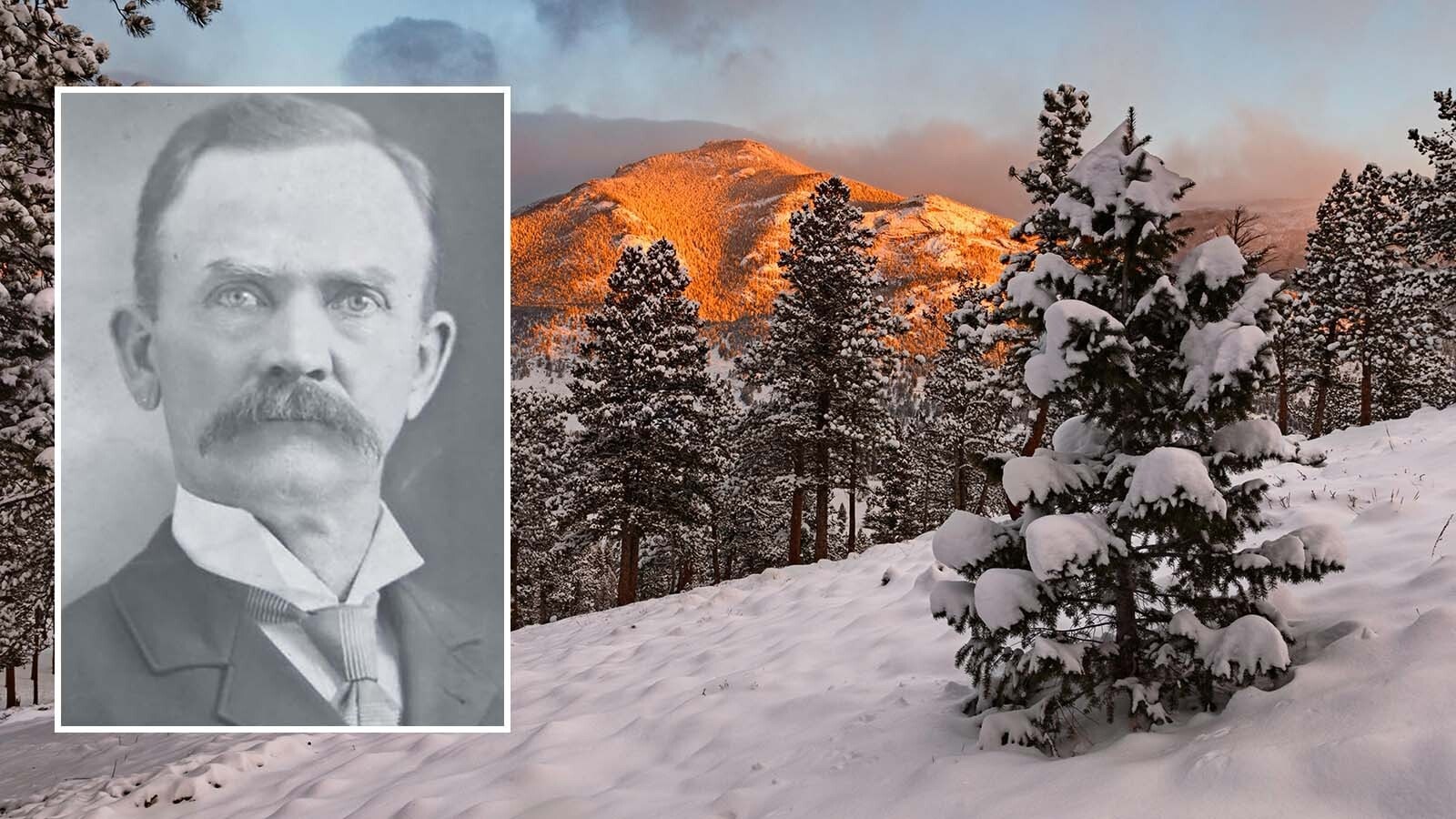Never-before-seen photos of legendary Wyoming mountain man Jim Baker, as well as a cache of letters written by an informant who was spying on the Wild Bunch outlaws, have just surfaced at a Colorado museum.
The Museum of Northwest Colorado in Craig is 34 miles from the Wyoming state line and not far from Savery, Wyoming, where Baker homesteaded in the Little Snake River Valley.
It’s also home to the Little Snake River Museum, which has several Baker artifacts, including his gun and sword, as well as the two-story cabin he built in the valley.
The new photographs of Baker show him riding horses with Dixon, Wyoming, founder Jim Douglas, as well as a shot of Baker with four unknown men holding the same rifle that is now displayed at the Little Snake River Museum.
Other photographs in the collection include a rare photo of Ute Chief Ouray not wearing Native American dress, as well as a picture of Kit Carson sitting with a surveyor of the time named D.C. Oaks.
‘Extremely Exciting’
The new photographs of Baker were found in a trunk that contained several of Baker’s personal effects as well as the photographs and Wild Bunch letters, according to the museum’s assistant director, Paul Knowles.
There were also items belonging to Baker’s son William, and a grandson, Willard Runnels, both of whom were bounty hunters.
“This was extremely exciting,” Knowles told Cowboy State Daily of the newfound artifacts. “I mean, there’s just not that much stuff like this that pops up unexpectedly anymore.
“You get little trinkets here and there that may still remain, but to get actual, firsthand documents and accounts like this that are just 140 years and later for a lot of this stuff. It is wonderful when that happens.”
Some of the newly found artifacts are still being processed, Knowles said, though a few have already been put on display at the Museum of Northwest Colorado.
Among them is a money belt that was given to Baker by A.G. Boone.
“A.G. Boone is extremely significant in the Rocky Mountains,” Knowles said. “He’s one of the early explorers and homesteaders in the mountains, but he’s also Daniel Boone’s grandson. So that’s a really cool artifact.”
There’s also a leather wallet and a pair of beaded moccasins with the personal effects, in addition to the collection of photographs and Wild Bunch letters.
New Letters Written By Wild Bunch Spies
The Wild Bunch letters appeared to be part of Runnel’s papers, which included about 25 deputization papers, allowing him to go and arrest people as a bounty hunter, as well as letters from some of Runnels’ informants.
It is these letters that include information about movements of the Wild Bunch in 1907 and 1908..
“These informants were providing information to Willard Runnels for him to go capture various people,” he said. “But one of the people he was after was a man by the name of Butch Cassidy.”
One of the letters mentioning the Wild Bunch was written by a Jim Davis on Silver Dollar Saloon stationery, which Knowles said was a saloon in Dixon and a known hangout for many outlaws, including Cassidy and his associates.
“Davis was the saloon owner himself,” Knowles said. “And he says in here, ‘I was in Denver in ’06 and I kept a close watch for you, but I never saw you in the Elk Parade. You ask about Butch Cassidy, and I have not heard that he was here, but his partner is here, (Elza) Lay, and I think there are several others hanging around.’”
Those “several others” included a mystery man named Jack Dempsey reported to be from New Mexico.
“I think from their maneuvers there will be something doing here very soon,” Davis continued in the letter, which goes on to catch Runnels up on several other matters at the time.
What’s significant there, Knowles added, is finding out that there were informants in Dixon watching for Cassidy and his men, keeping tabs on their movements.
“Another letter that’s in here, kind of referencing the same time period, is from H.F. Carey, and he writes to Williard Runnels (that) Elza Lay, again one of I wouldn’t say Butch Cassidy’s right-hand men, but one of the bigger parts of the gang, and the New Mexican stranger who is known as Jack Dempsey and one or two others left Baggs about the 10th and were evidently prepared to pull off a job, but what it will be is hard to determine.”
The letters and other documents will be digitized, Knowles said, so that they can be more readily available to researchers without getting handled constantly.
Baker’s Legend Remarkable, Even If Lesser Known
Baker is one of the unsung heroes of the mountain man era, with a legend that’s just as compelling as Hugh Glass, Kit Carson and Jim Bridger, even if lesser known.
Baker beat impossible, Thermopylae-like odds at Battle Mountain, defeating hundreds of Native Americans with a dozen or so scouts and survived not just one, but two bear encounters.
Baker, too, was approached by dime-store novelist Ned Buntline, who wanted to write his story. But unlike Bridger and Carson, Baker refused.
He preferred to live out his life quietly, and if history forgot his name, he was OK with that.
Artifacts that specifically belonged to Baker have been few and far between in the years since his death in 1898, Little Snake River Museum Director Lela Emmons told Cowboy State Daily.
“It’s just amazing when these things turn up,” she said. “You just never know where something’s going to come from.”
That was the case, for example, when Jim Baker’s gun turned up at the Little Snake River Museum one day, Emmons said.
“It was kind of funny, because my coworker comes out and says, ‘You know, some guy thinks he has Jim Baker’s gun. What should I tell him?’” She recalled. “She just really didn’t think it was for real.”
Eventually, gun experts examined photos of the gun.
“It sure looked like it was the right one from the photos,” Emmons said. “And sure enough, when we got the gun, there was no doubt. And it was just this old guy out in Washington state who was a great, great, I don’t know how many greats, but a grandson of Jim Baker’s and had just happened to have passed it on through the family.”
Emmons said she believes there are probably more treasure troves like this out there, but often the next generation doesn’t know what they have.
“I mean, everybody has pictures of some old person and they don’t know who it is,” she said. “People are just like, ‘What’s this?’ And then they throw it out.”
Emmons said she hopes people who discover old papers and photographs will take a second look.
“Just think of all the stuff in the world that’s been thrown away like that,” she said. “It’s thanks to the people who are the savers and the protectors of this stuff that we have anything left at all.”
Arrest Warrant For ‘Bad’ Bob Meldrum
Also found among Runnels’ papers was an arrest warrant out of Telluride, Colorado, for the infamous “Bad” Bob Meldrum.
The warrant doesn’t explain the reason for the arrest, and Knowles hasn’t found anything in historical records explaining it yet.
It may represent new information about Meldrum, who was then considered one of the fastest gunmen in the West.
That reputation started in Dixon, where Meldrum, as deputy sheriff for Carbon County, shot and killed a fugitive named Noah Wilkerson in 1900.
Meldrum said the man tried to flee and collected a $200 reward, worth more than $6,000 today.
That was Meldrum’s first known killing, but it would not be his last.
Runnels had been working with Meldrum at the time, Knowles said.
The two likely met when the Mine Owners and Citizens Alliance brought both men to the Tomboy Mine near Telluride around 1902, reportedly to find out who murdered a man named Arthur Collins.
A 1904 newspaper account of the time, however, says the two men were more often stopping and searching miners for stolen ore, without warrant or due process, than investigating Collins’ murder.
Runnels, according to that same account, handcuffed a striking miner named Harry Maki to a telegraph pole in a blizzard and left him there. Eventually, after many protests against such cruel treatment, Runnels relented and took the man to jail instead.
The crime Meldrum is most famous for is shooting a popular cowboy named Chick Bowen in Baggs.
Bowen had been whooping it up and hollering in the streets, causing quite a commotion, according to historical accounts, and Meldrum was dispatched to calm the situation.
Bowen reportedly argued his innocence eloquently but eventually did agree to go with Meldrum. While he was bending down to pick up his hat, however, Meldrum shot the unarmed cowboy multiple times.
Bowen died the following day.
There had already been questions about Meldrum’s methods before Bowen’s death, and that proved the last straw for the lawman in Wyoming at least.
He was arrested and found guilty of manslaughter in 1916, after three appeals, and served 18 months of a five- to seven-year sentence.
During his incarceration, he created many pen and ink drawings of actual historical events. While he had no formal art education, he did have a great memory and a great eye for art in general.
He later settled in Walcott, Wyoming, where he opened a saddle shop. It burned down in 1926, after which Meldrum packed up and left town, never to be seen or heard from there again.
Contact Renee Jean at renee@cowboystatedaily.com
Renée Jean can be reached at renee@cowboystatedaily.com.








